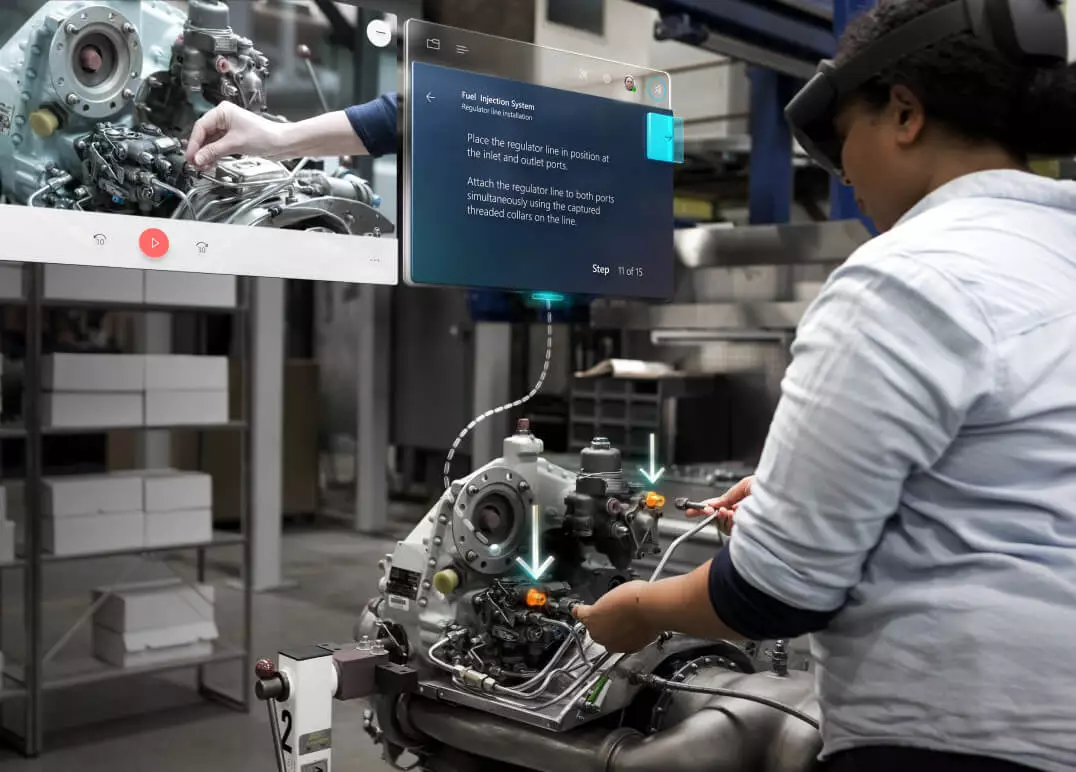Using Virtual Reality (VR) in the Remote Assistance
Posted on May 3, 2023 5 minutes 923 words
Table of contents
As our world becomes increasingly interconnected, remote assistance has become an essential component of many industries. By leveraging emerging technologies, we can enhance the remote support experience and streamline processes for both support specialists and users. Virtual reality (VR) has emerged as a powerful tool that can revolutionize remote assistance. In this blog post, we will explore the benefits of using VR in remote assistance, delve into key features, examine use cases across various industries, and discuss the challenges and barriers to adoption.
Understanding Virtual Reality and Remote Assistance
Virtual reality is an immersive, computer-generated environment that replicates real-world experiences or creates entirely new ones. Users wear a VR headset that tracks their head movements and displays a 3D environment to their eyes, while handheld controllers enable them to interact with the virtual world.
Remote assistance refers to support services provided from a distance, typically using communication technologies such as phone, chat, or video conferencing. Remote assistance is widely used in IT support, healthcare, automotive, and other industries to troubleshoot issues, provide guidance, or offer training.
By combining VR with remote assistance, we can create a more immersive, interactive, and efficient support experience for both the user and the support specialist.
Key Features of VR-enabled Remote Assistance
In this section, we will explore the fundamental features that make VR a valuable addition to remote assistance, enhancing communication, collaboration, and problem-solving capabilities for users and support specialists alike.
Immersive and interactive environment
VR allows for a more engaging, hands-on experience, enabling users and support specialists to collaborate in a shared virtual space. This can lead to a better understanding of the issue at hand and foster a sense of presence and teamwork.
Real-time collaboration
VR enables real-time communication between the user and the support specialist, allowing them to work together to solve problems more efficiently. This can help reduce resolution times and improve overall satisfaction.
Enhanced troubleshooting
By offering a more accurate representation of the user’s environment, VR can facilitate better diagnoses and resolutions of issues. Support specialists can virtually “see” the problem and provide guidance through visual cues and annotations, reducing downtime and costs.
Accessibility and scalability
VR can make remote assistance services more accessible to a wider audience, as well as more scalable to handle increased demand.
Use Cases for VR in Remote Assistance
Next, we will delve into various industries that have successfully integrated VR into their remote assistance services, showcasing how this technology can be utilized to improve efficiency, effectiveness, and user satisfaction across diverse applications.
Healthcare
VR is being used in telemedicine to provide remote consultations, allowing doctors to virtually examine patients and provide diagnoses. In addition, VR can enable remote surgery, with experienced surgeons guiding less experienced colleagues through complex procedures from a distance. Medical training can also benefit from VR, as students can practice their skills in realistic virtual environments.
IT Support
VR can improve remote troubleshooting and support by enabling IT professionals to view the user’s screen or environment in 3D, better identifying issues and providing guidance. Software developers can collaborate on coding tasks and share immersive visualizations of their work.
Automotive
VR can aid in remote vehicle diagnostics and repairs, allowing mechanics to virtually examine vehicles and identify problems. This can lead to faster repairs and reduced downtime for customers.
Education and Training
VR can support remote learning by providing immersive educational experiences, allowing students to explore virtual environments and interact with digital content. Similarly, VR can be used for on-the-job training and professional development, providing realistic scenarios for employees to practice their skills.
Manufacturing and Maintenance
VR can facilitate remote maintenance and repairs of complex machinery by allowing technicians to virtually inspect and troubleshoot equipment, guiding local staff through necessary repairs, and minimizing downtime.
Overcoming Challenges and Barriers to Adoption
Finally, we will address the hurdles that may impede the widespread adoption of VR in remote assistance, discussing potential solutions and strategies for overcoming these challenges and ensuring a seamless, secure, and user-friendly experience.
Technological limitations
Current VR technology may not always offer the level of detail or responsiveness needed for some applications. As VR technology continues to advance, these limitations are expected to diminish.
Connectivity and bandwidth
Reliable, high-speed internet connections are crucial for smooth VR experiences. As global internet infrastructure improves, connectivity concerns should become less of a barrier to VR adoption. In the meantime, adopting technologies like 5G and edge computing can help mitigate these issues.
Security and privacy
Ensuring the privacy and security of sensitive information shared through VR is essential. To address this, companies should implement encryption, access controls, and secure communication protocols. Regular security audits and employee training can also help protect user data.
User acceptance
Some users may be hesitant to adopt VR-based remote assistance due to unfamiliarity or discomfort with the technology. To increase user acceptance, it is crucial to provide user-friendly interfaces, intuitive controls, and proper training. As more people become exposed to VR through gaming and entertainment, acceptance of VR in remote assistance is likely to grow.
Conclusion
Virtual reality has the potential to transform remote assistance, offering immersive and interactive experiences that can lead to more effective and efficient support services. As we overcome current challenges and technological limitations, VR can become an indispensable tool in a wide range of industries, from healthcare and IT support to automotive and manufacturing. By exploring and embracing VR-based remote assistance solutions, we can pave the way for a more connected and collaborative future.








